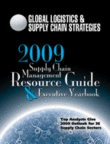
Visit Our Sponsors |
|
|
|
|
|
|
|
|
|
|
|
|
|
|
|
|
|
|
|
|
|
|
|
|
|
|
|
|
|
|
|
|
|
|
|
|
|
|

The proliferation of sensors with capabilities to monitor many aspects of the physical environment, combined with increased interest in joining communities that share such data, dramatically changes the information available to monitor myriad activities in real time-from supply chains to your personal social network. Beyond research into sensor technologies, efforts are underway to create new systems to process huge volumes of data. For example, MIT recently undertook a study to assess the feasibility of creating infrastructure that enables dynamic management of mobility and transactions across the entire region of Piemonte in Northern Italy. The study, which linked researchers in several departments and disciplines, provides a glimpse into some of the challenges and the potential for increased visibility of many aspects related to mobility, including supply chains.
Sensor Network Integration: The internet provided infrastructure to link computer servers with users via a sophisticated system of protocols and routing structure-offering the ability to plug in software applications developed by a wide variety of companies and individuals. Researchers are already working on a new integration infrastructure to link decentralized sensor networks from various private and public entities. Integration will not be rigidly defined by a central authority; but rather, organizations and individuals will publish information and subscribe to services based on the merit of the system. This shared system will require new forms of relationships among agencies, organizations, and companies as well as ad hoc communities of individuals who share and use data to interact and transact, sometimes without formal agreements but rather an assessment of "trust."
Data Fusion Engines: Data fusion is the process of transforming massive amounts of data obtained from many heterogeneous sources into an accurate estimate of the environment. New database and fusion engine technologies are being developed to quickly process millions of real-time data feeds produced per second from various sources, filter the important elements, and continually integrate them with appropriate a priori knowledge into a coherent model of the current environment state. As these technologies improve they will be applied to provide rich, real-time descriptions of supply chain domains such as ports, highways and rail networks into which various user applications can plug in.
Potential Strategies and Services: All of the effort in gathering, integrating, and analyzing data must enable users to define and implement strategies that effectively regulate and direct flows of products and people. Services such as asset monitoring, incident detection and dynamic pricing provide a combination of actionable information and aligned incentives to engage individuals as agents in optimizing flows and procuring products and services. The rapid feedback loop of implementation and measurement provides governmental organizations with the opportunity to analyze the implications of new policies; and companies can more easily conceptualize and evaluate innovative new services and process improvements, including the potential to profile their increasingly mobile customer base.
The Outlook
Accelerated research and development in the coming years will increasingly link sensors across the urban and rural infrastructure-from port operations to urban retail outlets; across modes of sea, air, road and rail; and applied to individual and freight movements. Public and private organizations that collaborate now in development of sensor network infrastructure and applications stand to gain early competitive advantage as new services and efficiencies are created.
RELATED CONTENT
RELATED VIDEOS
Timely, incisive articles delivered directly to your inbox.

